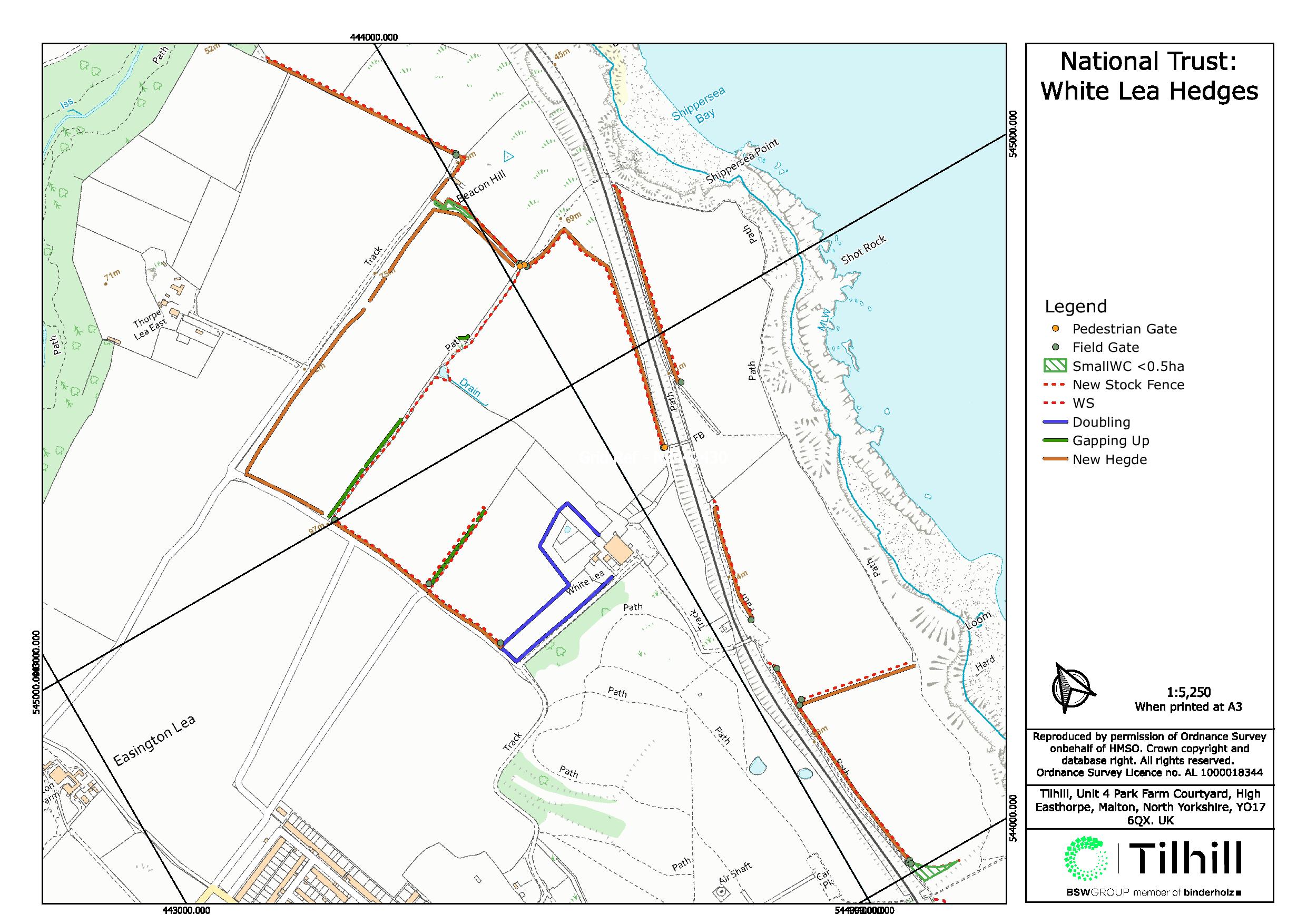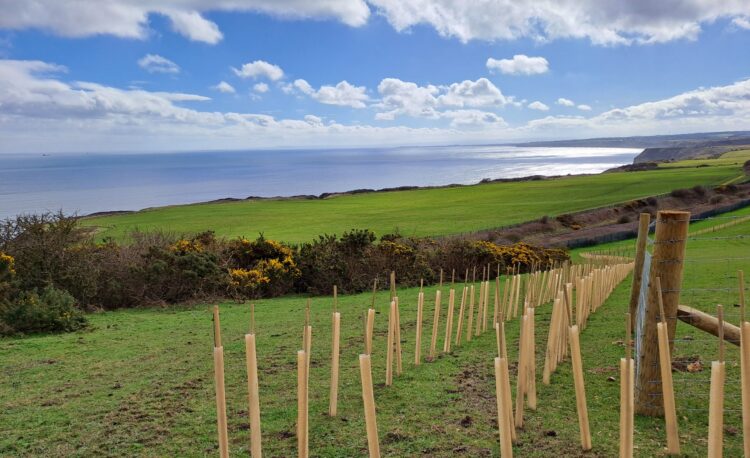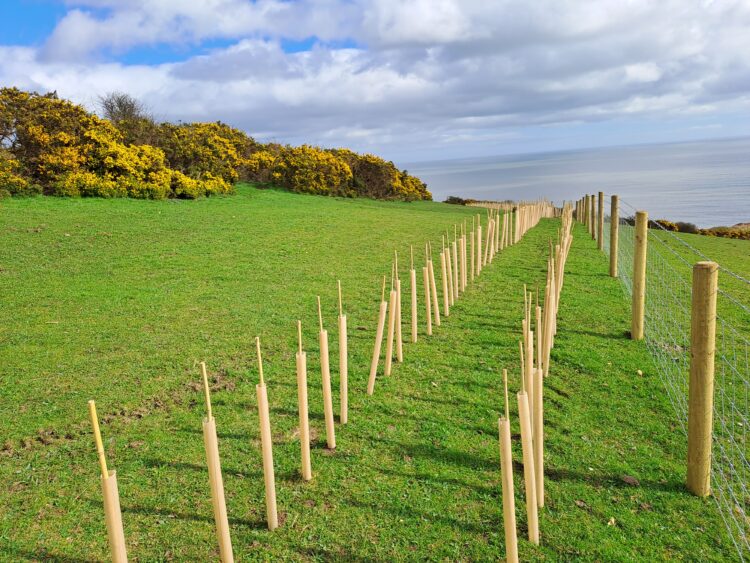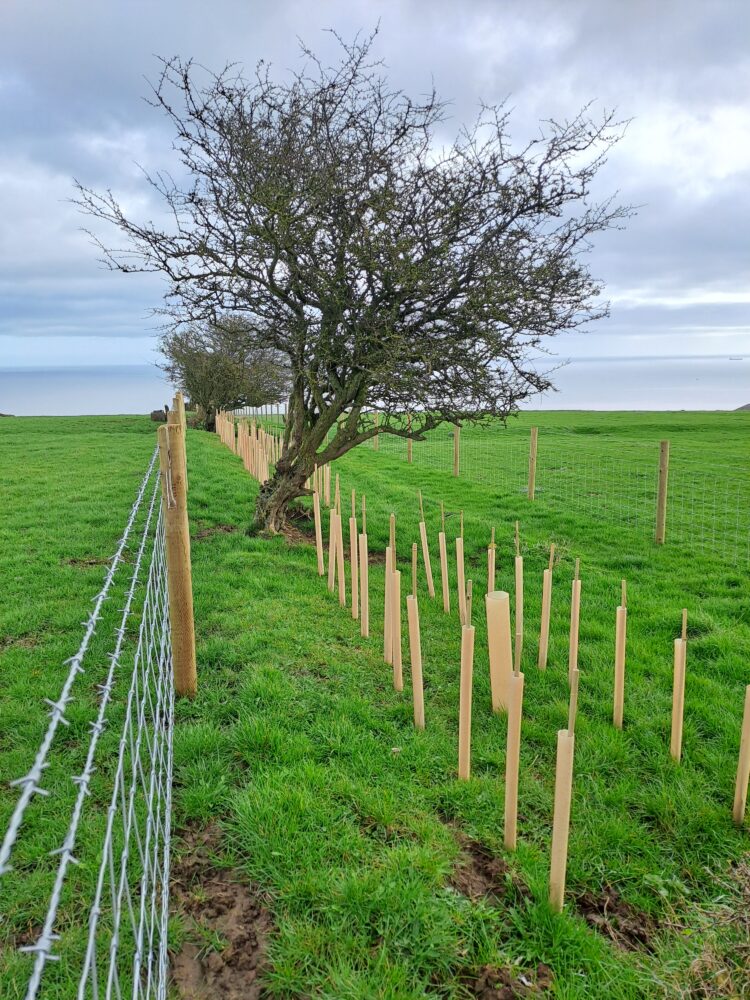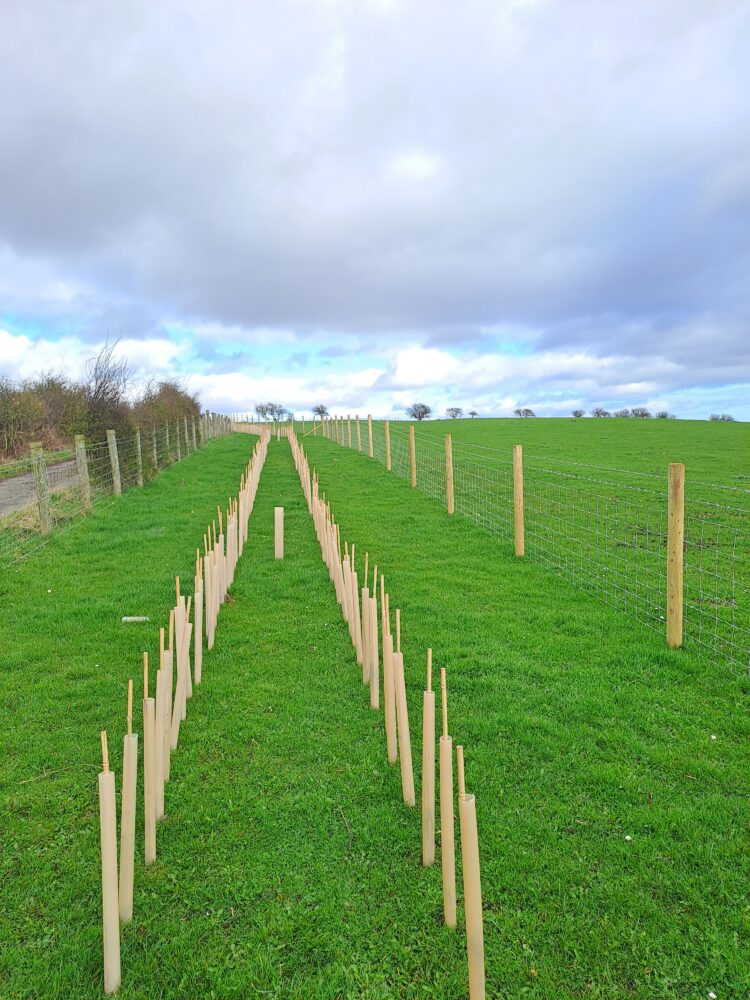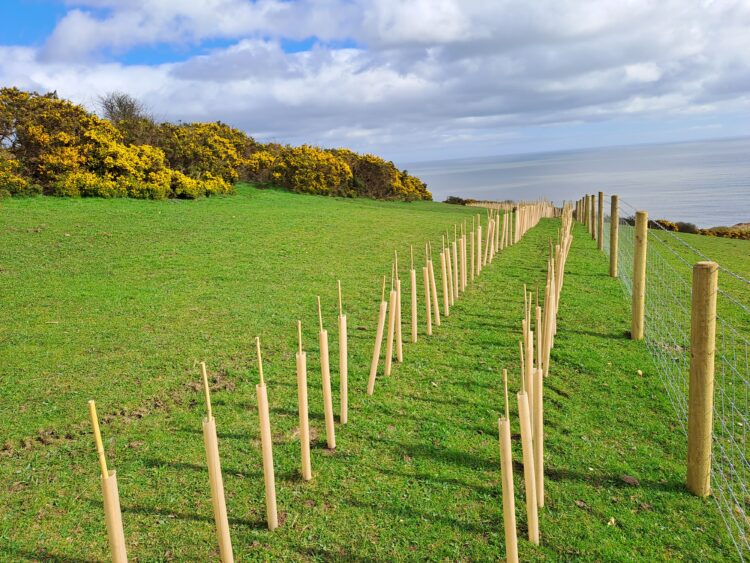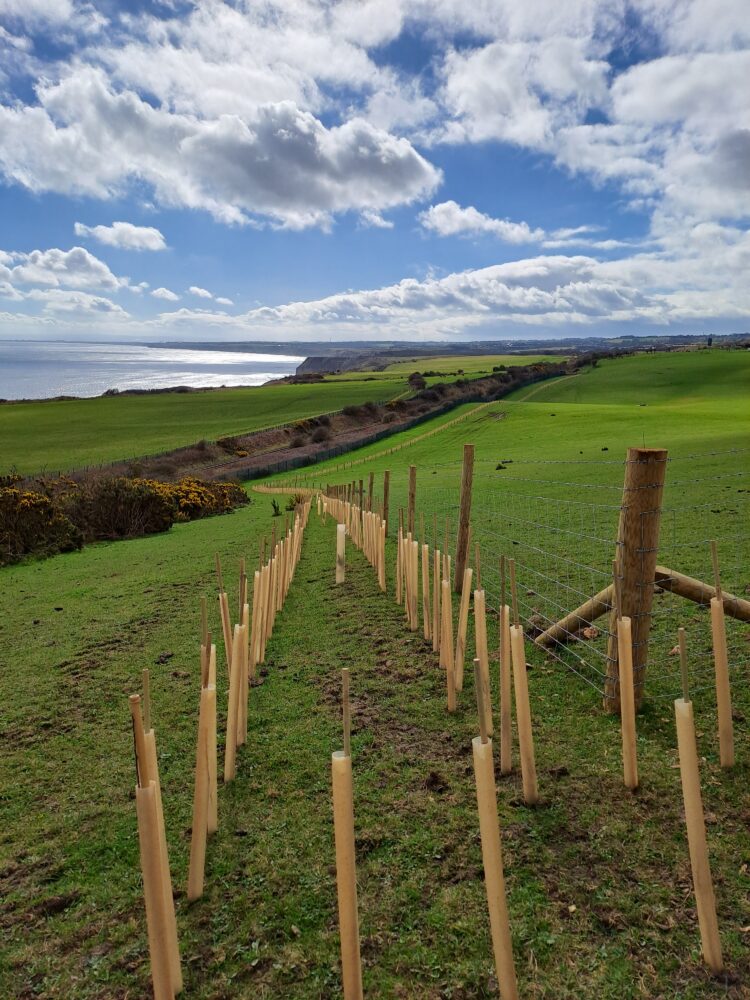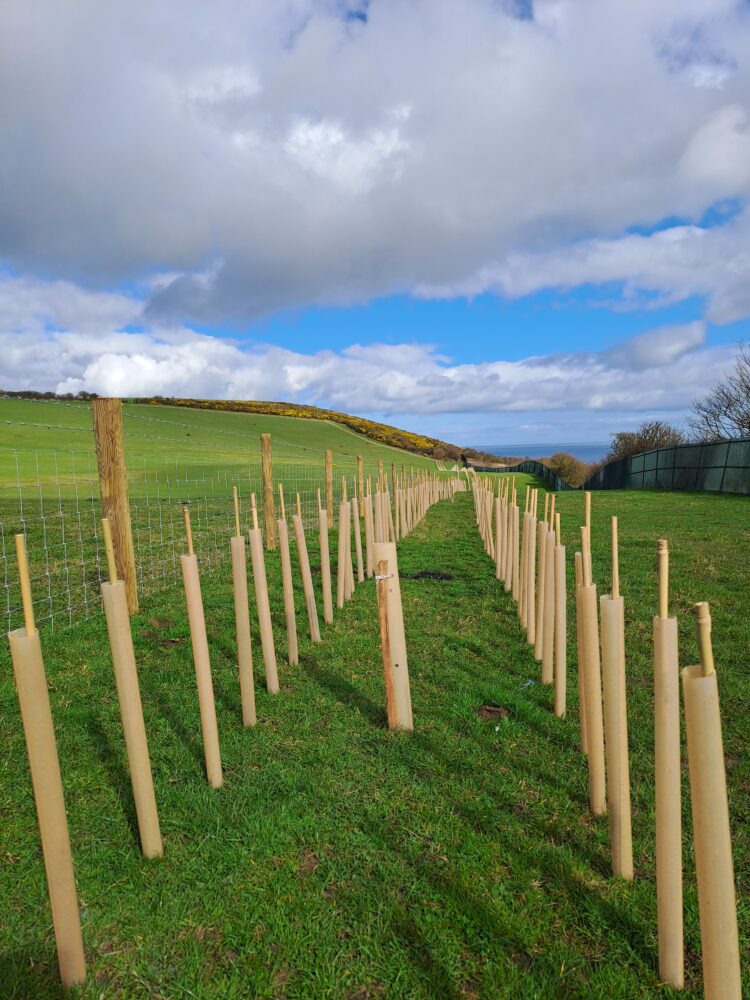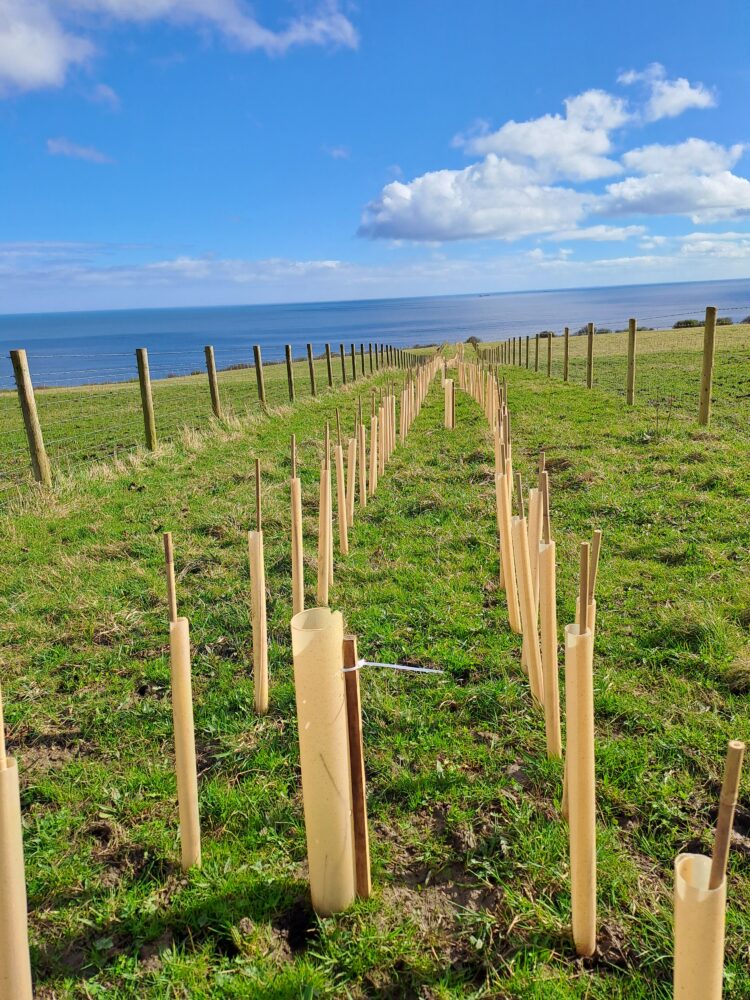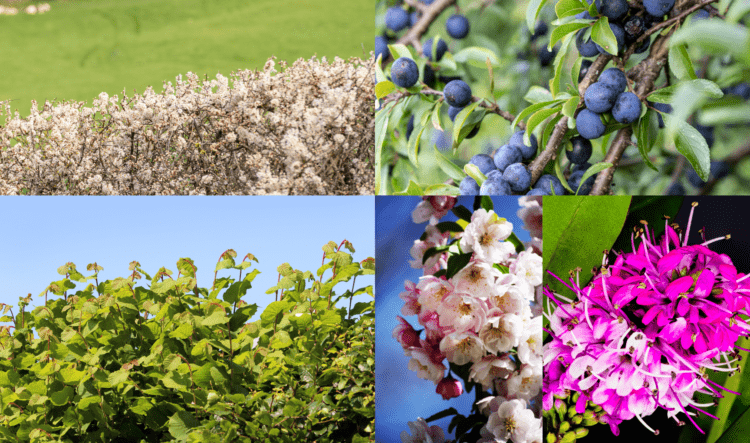This website uses cookies so that we can provide you with the best user experience possible. Cookie information is stored in your browser and performs functions such as recognising you when you return to our website and helping our team to understand which sections of the website you find most interesting and useful.
Objectives

Hedgerow provision planting for habitat and SSSI connectivity

Habitat creation for wildlife and increase biodiversity

Creation of new public path

Shelter to benefit livestock

Prevent soil erosion

Sequester Carbon
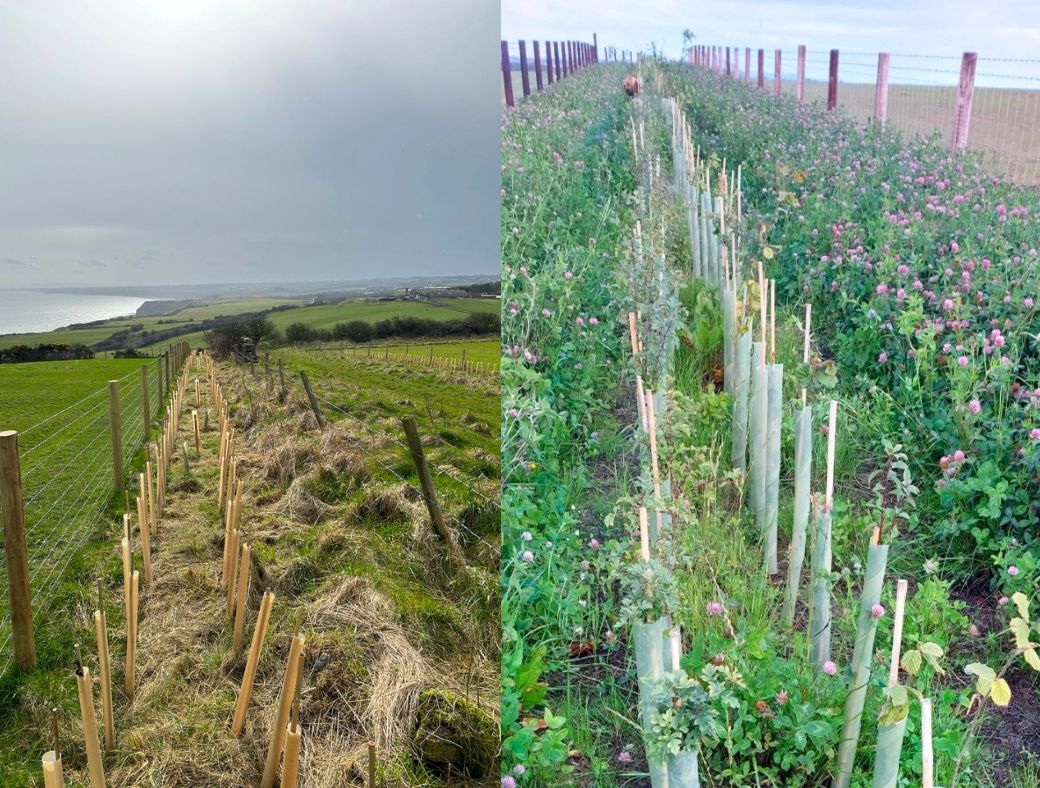
Before and after example of what the hedge growth will look like in the future
Partners and Stakeholders
Tilhill Forestry worked with the North East Community Forest (NECF) to secure a grant to support the project. Durham County Council hedgerow experts fully supported the project and worked with the partnership to help shape the planting plans, such as adapting hedge locations to benefit the public by ensuring open views of the Durham SSSI coastline were retained.
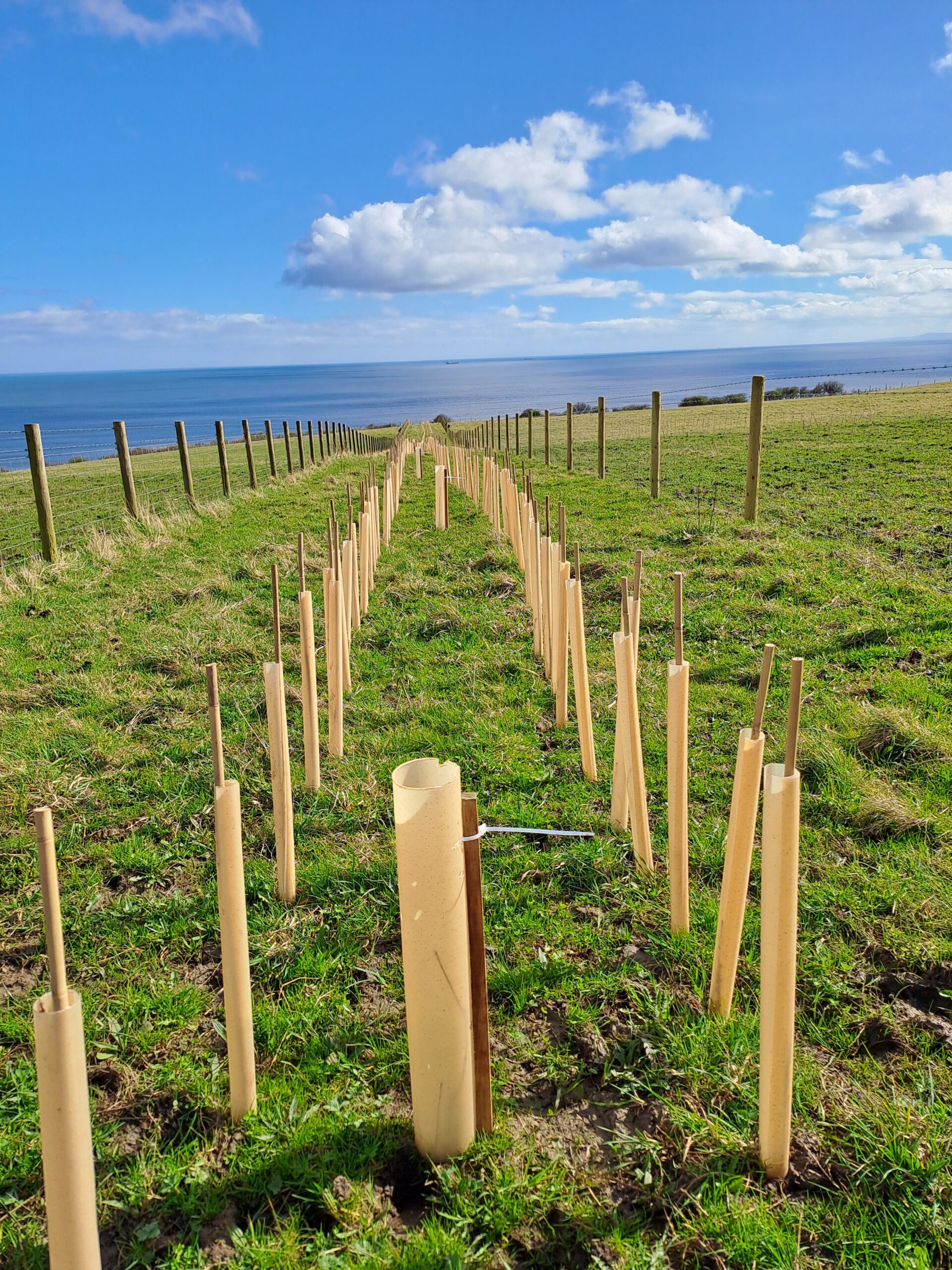
Views of the coastline
Tree and Shrubs Species
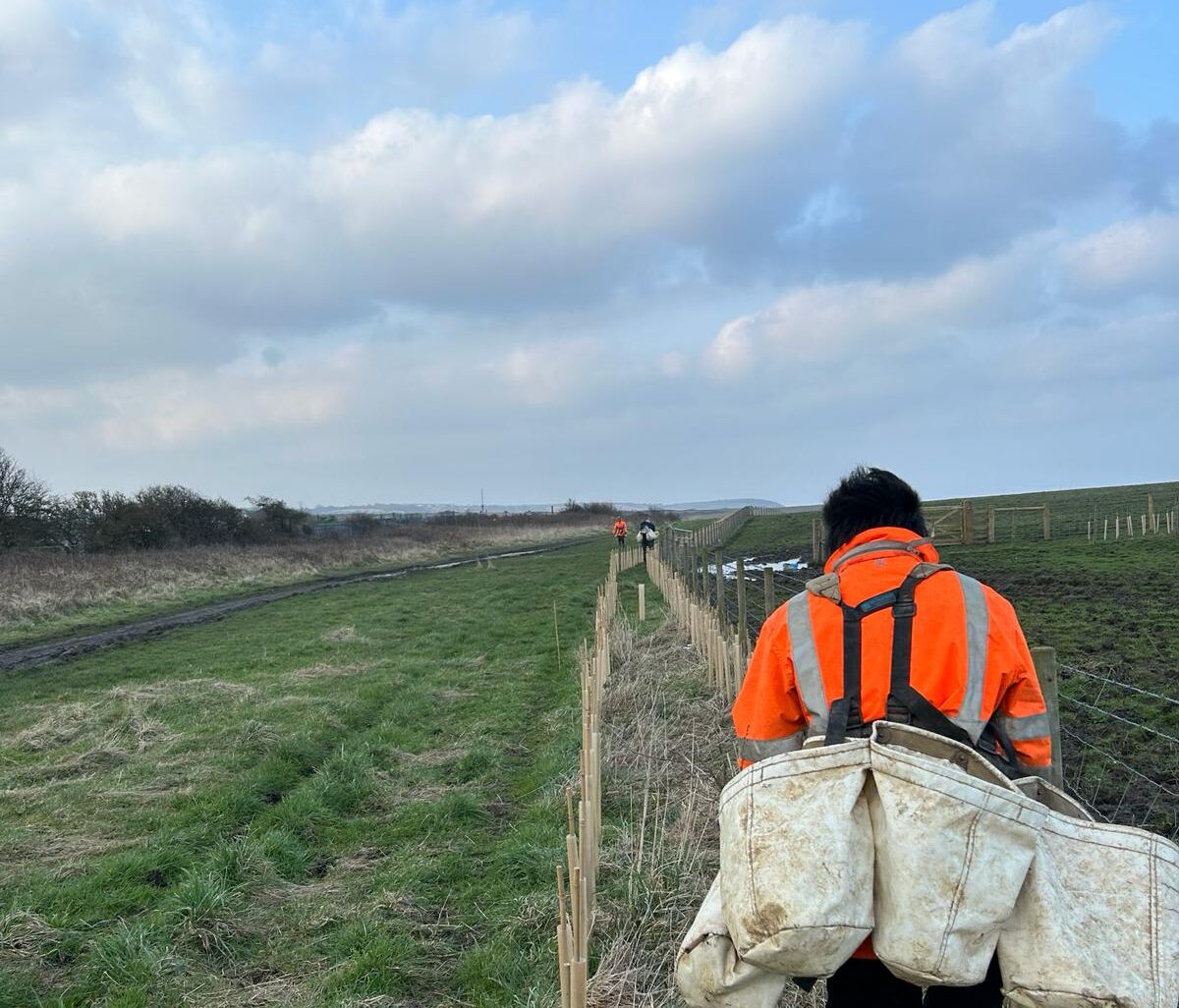
Planting
A diverse native species mix of hedge whips, woodland trees and shrubs were chosen for planting, including Hawthorn, Blackthorn, Hazel, Crab Apple, Wild Privet and Bay Willow. Species were planted in double staggered rows and include 500 in-hedge trees on average every 15 metres. This will allow the tree species which include English Oak and Field Maple and others to grow to full maturity, providing further benefits to wildlife (see example below). A five metre gap between the fence line and the hedge line was created to allow the wildflowers to grow and establish.
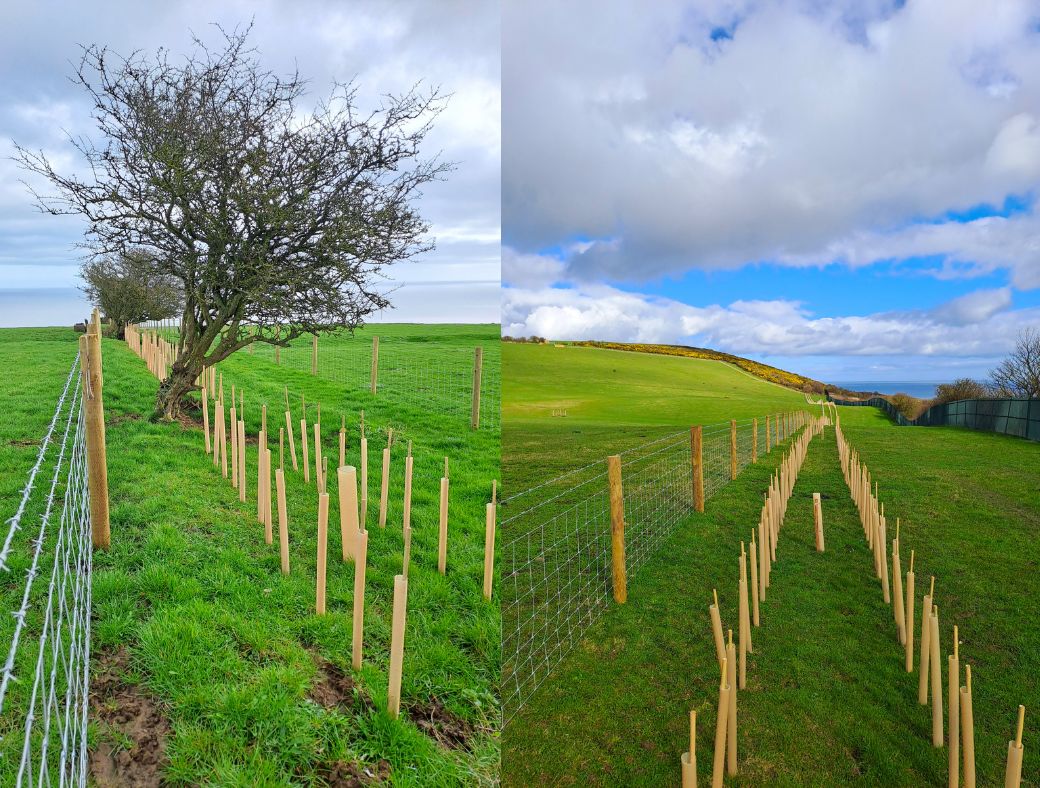
In hedge tree planting
Tree protection
First of a kind Biodegradable Terra Rainbow wrap guards supplied by Green-tech were Chosen by the Trust to protect the saplings and ensure less plastic was used . White Lea Farm is the first project to use the Rainbow Terra wraps, a revolutionary new shelter manufactured from UK sourced wood that biodegrades naturally in soil, is 100% plant based and non-toxic and biodegrades into healthy nutrients that will not harm the soil, freshwater systems or ocean. Wraps were used specifically to prevent rabbits destroying the trees. A mixture of hardwood and bamboo stakes were used to support the trees as they grow.
Stock proof fencing was installed to prevent livestock grazing by the cattle and within the farmer’s field.

Stock proof fencing
Minor deer browsing will be expected and difficult to prevent, however their occasional presence and tabletop grazing will encourage bushier sideways growth.
Habitat and Benefits:
The provision of the hedges is for habitat connectivity which links the nearby denes and SSSI’s together, from Hawthorn Dene (SSSI) to Horden Dene (SSSI) along the Durham coastline.
Much of the site has been over grazed in parts with low biodiversity interest which is susceptible to erosion and leaching with a compacted soil profile. Planting the hedgerow will help give a more diverse habitat range and improved landscape.
The more diverse a hedgerow, the more species it will support as different floral species will flower at different times of year and offer a food supply spread throughout the year. As the hedgerow matures, dead wood and plant litter is created which offers habitat for invertebrates which then attract other species, such as bats, small mammals and birds which then feed on the insects.
The hedgerows will offer a valuable linear feature for commuting bats and can also offer a foraging resource. Bats are known to avoid flying through open space as it leaves them exposed to predation from species such as the tawny owl. Therefore, the hedgerow offers excellent cover and will link up key habitats.
The in-hedge tree planting offered by the scheme will also over time (when the trees mature and start to show natural signs of decay) offer increased roosting opportunities for bats. Brown long-eared bats are known to ‘glean’ insects off foliage when foraging, which means they essentially hover over the vegetation and pick off any unsuspecting insects. Overall, the increase in hedgerows and trees allows for an increase in the capacity of the landscape to support commuting, foraging and roosting bats over time.

Brown Long-Eared Bat
The planting of new hedges will also benefit bumble bees which use them as a guiding feature when they are foraging the edge habitat and late-summer/early-autumn flowers are essential for the rearing of new queen bumbles, which allows them to build fat reserves to be in good condition for hibernation, whilst also providing nesting and hibernation sites. The hawthorn and blackthorn will provide important food resources in spring when the queens emerge from hibernation, at a time when other few species have flowered.
Hedgerows are also important for butterflies, such as the brown hairstreak, a formerly widespread species which is now only found in southern England and Wales and is a priority species. The brown hairstreak lays its eggs on blackthorn, but their population was affected after World War 2 when many hedges were removed or flailed, which destroyed the butterfly eggs.
This project will provide an ideal habitat, allowing wildlife to move across the landscape, supporting biodiversity for nesting birds and insects. The species chosen will provide shelter and food such as berries, nectar-rich flowers, fruits, nuts and seeds for bird species and will attract various insects as pollinators to become an additional food source for the birds.
Hawthorn makes up over 50% of the overall planting which will benefit the native wild farmland birds through food provision that can last into the winter. Hedgerows are a priority habitat for some of the UK’s threatened bird species such as house and tree sparrows, bullfinches, dunnocks, linnets, spotted flycatchers and willow tits. The yellow hammer, a red list species whose numbers have dropped approximately 62% since 1967, will also benefit from this new hedgerow. Their decline is thought to be due to changes in arable management and the removal of hedgerows, which leads to a reduction in nesting habitat and foraging resource. Song thrush, an amber list species, is also associated with hedgerows and has seen a 49% decline since 1967.
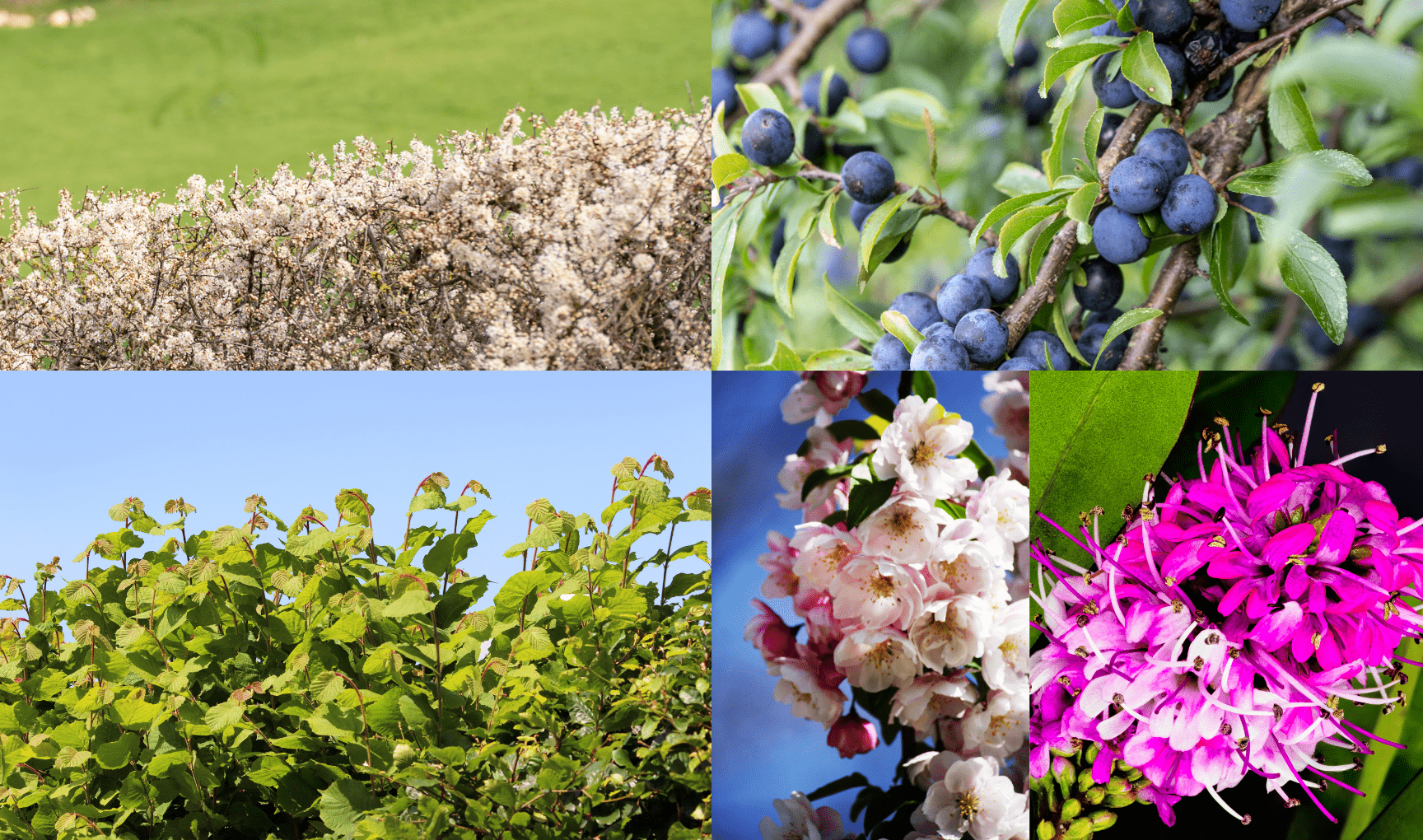
Hedging species: Clockwise from top left: Hawthorn, Blackthorn, Hazel, Crab Apple and Wild Privet.
The hedge whip species will also provide lots of seasonal interest with summer flowers and autumnal colours and serve as shelter for the nearby farmers’ livestock from harsh weather conditions and for crop protection in the arable field areas. Other benefits of hedging include water erosion, which will reduce runoff into the North Sea, and provide shelter from the strong winds.
Ongoing Maintenance and Future Management
Tilhill Forestry will return to the site to carry out beat up surveys, replace tree losses where required, and carry out any competing vegetation management to give the tree species the best chance of survival.
The National Trust will also be engaging with its volunteers to undertake weeding, wrap guard and cane adjustment tasks.
Community benefits:
White Lea is a popular area with locals and National Trust visitors who enjoy the open space and views of the North Sea and coastline.
The public access for National Trust site visitors will be improved through a new pathway, with pedestrian and field gates allowing the public to access the route without disturbing livestock.
White Lea Farm hedges overview map
View more Tilhill Forestry case studies
Browse our case studies for multiple objectives including timber harvesting, biodiversity, carbon sequestration, habitat connectivity and more.

Case Studies
View Tilhill Forestry's various case studies for forestry management, timber harvesting, woodland creation and peatland restoration.
Find out more





